How to Winterize Your Garden: Essential Tips for the Season
By Ryder Ziebarth
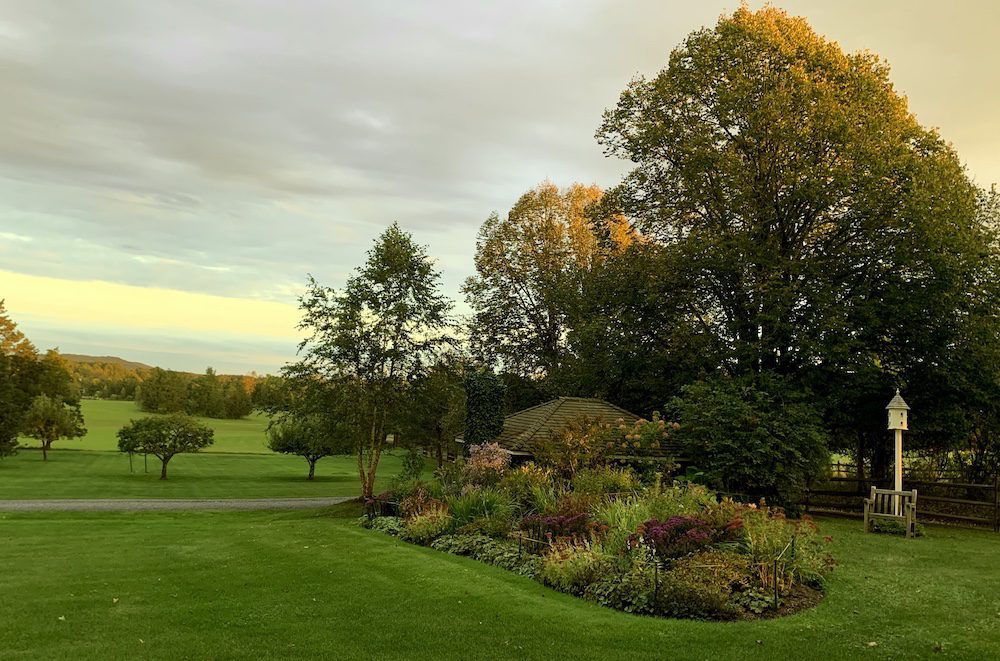
Growing up on a farm, I was always a country girl at heart.
Although I lived and worked happily for many years in Manhattan before marrying my husband Michael, and raising our school-age daughter, Lizzie, when the chance came up to buy my family’s homestead from my father in 1995, we jumped at the opportunity. However, neither Michael or I were prepared for the amount of work ahead in renovating a 1745 farmhouse and it’s thirty-acres of overgrown farmland called Cedar Ridge Farm in Bedminster, New Jersey.
I immediately rolled up my sleeves to begin digging in the dirt, while Michael tackled the construction issues related to renovating the long-neglected house and barns.
Armed with gardening manuals, my father’s help, and the names of a few good local nurseries, I set out to recreate some of my grandmother’s mid-century gardens as well as a few new ones of my own.
Mindful of budget, I chose to work primarily with perennial plants giving me the most bang for the buck, returning in the gardens year after year.
Although many people are now thinking about planting fall shrubs and bullbs to appear in spring, there also needs to be an effort in winterizing your existing beds as well.
Ryder’s 5 Tips to Prepare Your Beds for Winter:
1) Think Clean
Clean out your window boxes and pots, wash them, then store. Clay pots do not do well in the cold weather.
2) Cutback Your Plants
Remove spent foliage to tidy your beds and make it easier for new growth to push forth in the spring. BUT! Leave the hydrangeas alone. Cut the brown mop heads if you like and leave their woody stems until the spring(mid-March.) You can always refer to a garden manual if you aren’t sure what variety you have, or use an app on your phone to identify it, such as “Picture This.”
3) Time To Mulch Again
Spread a bit of cedar mulch on your beds with tender plants to keep the roots cozy. Pine boughs do nicely too. They also look nice in your winter window boxes. Mulch protects tender roots so they won’t freeze in the wintertime.
4) Protect Your Hard Work
Apply horticultural oil to your boxwood particularly in the fall. It protects the leaves against freezing and sun damage. I consider it one of the most important steps in maintaining a healthy winter garden.
5) Herbs For Every Season
Herbs such as rosemary can last outside Zones 3-9 if mulched and kept out of the wind. It’s always nice to have fresh herbs on hand for cooking hearty, winter stews. Thyme will also last depending where it’s planted.
Every season has its pleasures.
Perhaps you also want to think of additions to your own garden. Here is what I have planted over the years – that also gives the lovely fall color you see in the pictures of my perennial flower bed shown below: plenty of sedum, aster (pictured below) a few garden roses, two varieties of bigleaf hydrangea, evening primrose, Japanese fern, wild geranium, purple vervain, coneflower, anise hyssop, grape leaf anemone ( pink) starwort, beauty bush, lindheimer’s bees blossom and meadow rue.
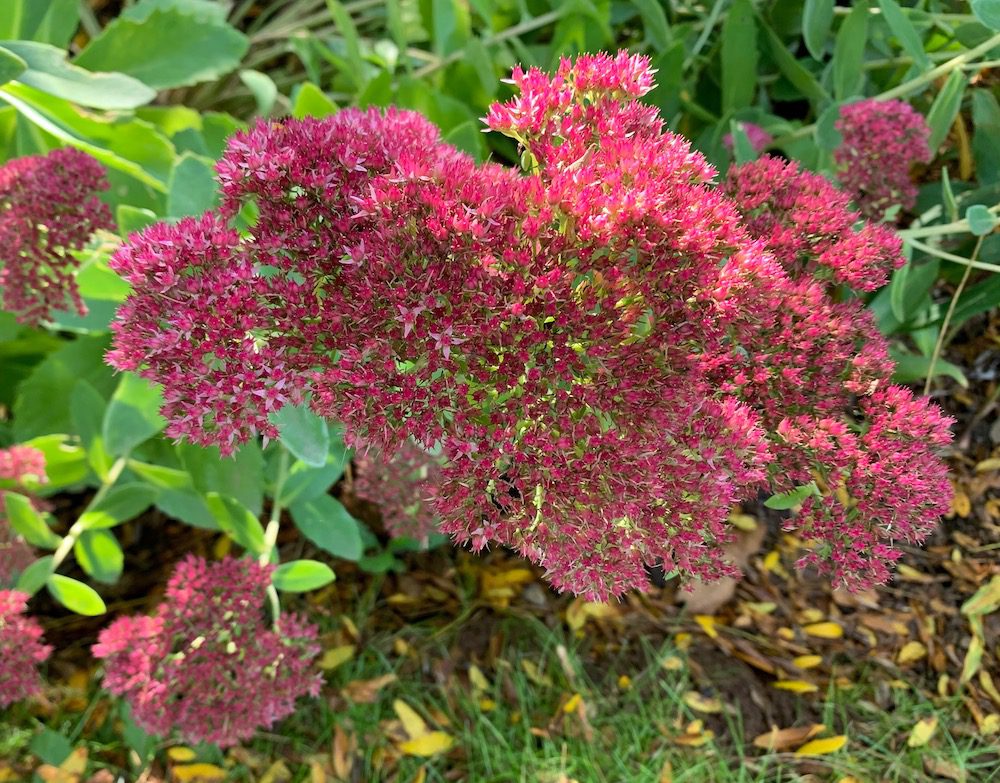
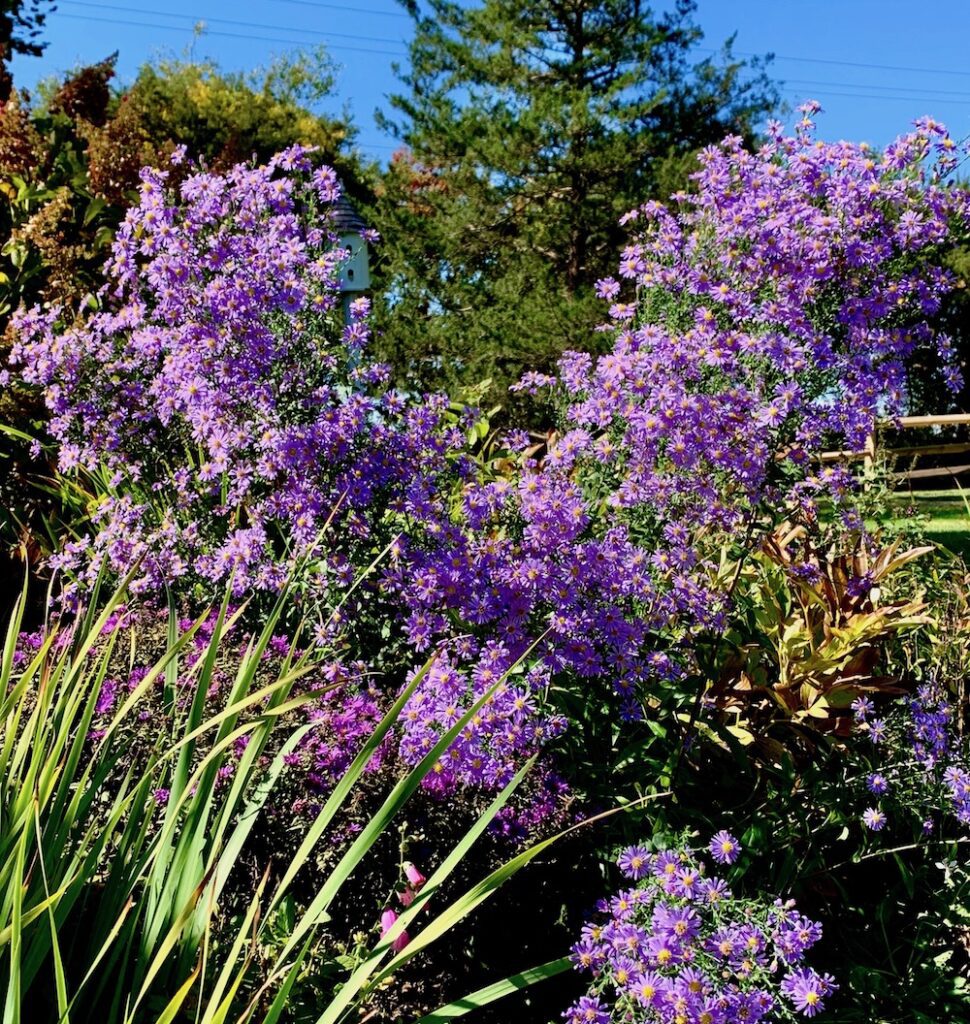
Throughout the farm are also American Boxwood, deep pink azalea, Miss Kim’s lilac, Pieris Japonica, limelight hydrangea, Viburnum Carlessi, with its wonderful pale pink, spicy-smelling flower clusters set under every window, plus a few well-placed holly trees formed the foundation beds. I chose pachysandra as ground cover, which stays green through the winter and can be used in many household floral arrangements all season long.
Each spring, the Hosta, astilbe, and the large variety of ferns I have collected during my twenty-five years of gardening on the farm are divided and dotted into the pachysandra adding interest and texture.
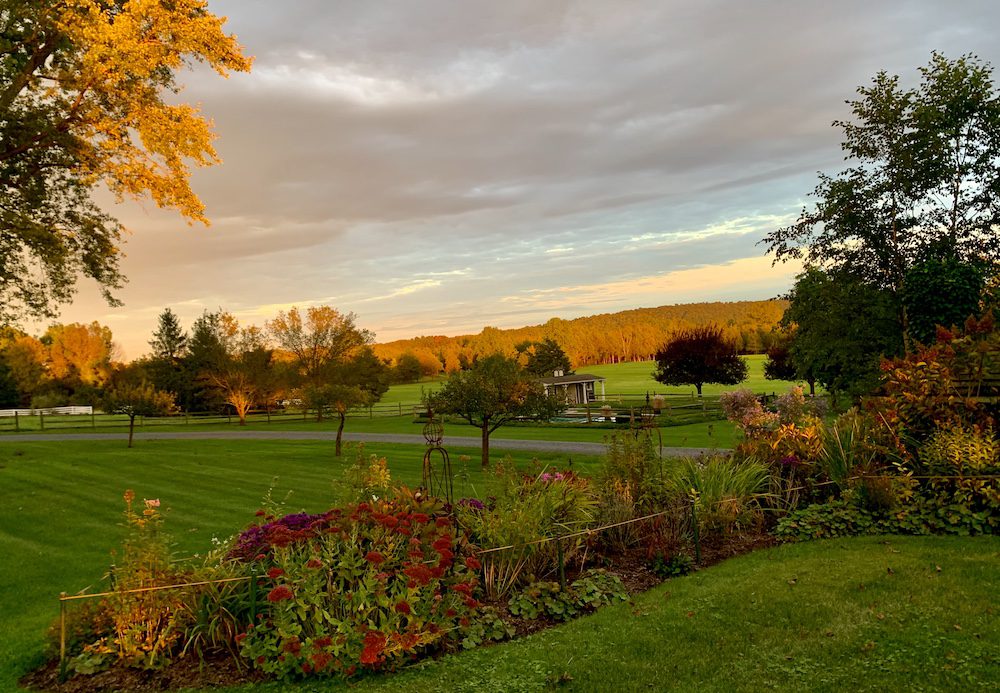
The perennial flower bed seen here during early fall, once my grandmother and great-grandmother’s favorite rose garden, hosts many of my favorite New Jersey perennials. The plants are protected from a large deer population by an inexpensive electrical wire system she set up herself, grounded on metal posts set into the border, and plugged into a local power source near-by.
To keep the gardens interesting, I swap plants and information with friends, am involved in my local garden club, attend many garden lectures in the Tri-state area, collect garden books, and have asked so many questions at my local nursery, they jokingly offered me a job.
This bed features several pink garden roses bushes in honor of my grandmother. The magenta tipped sedum you see now, two, big leaf hydrangea, an undulating line of amethyst colored asters that travel up and over the two-tiered beds separated by a small stone wall hand-built by my grandfather in the 1940’s; white and pink evening primrose, and purple foxglove. A waning lady’s mantel border is punctuated with Autumn fern and cranesbill geranium. Purple vervain, anise hyssop, pink-petaled grape leaf anemone, starwort, beauty bush, Lind Heimer’s bees blossom, and meadow rue complete the fall picture.
As these perennials dye back and go to ground, I cut the spent foliage leaving as much standing for the birds and bugs as I can, then cover it with about two inches of fresh cedar mulch to keep delicate plant roots toasty during the winter months.
As spring rounds the bend, a layer of fresh mulch is applied; this time a blend of grass clippings and ground leaves I compost each year in a patch behind their barn. The mixture is dug into the soil a bit, careful not to disturb any early risers reaching toward the mid-March sun.
My love of place gave me a love of nature. My ignited passion, curiosity, and love of beauty give me all the tools I need to start a love of gardening.
A garden is always a work in progress – just like a human being.
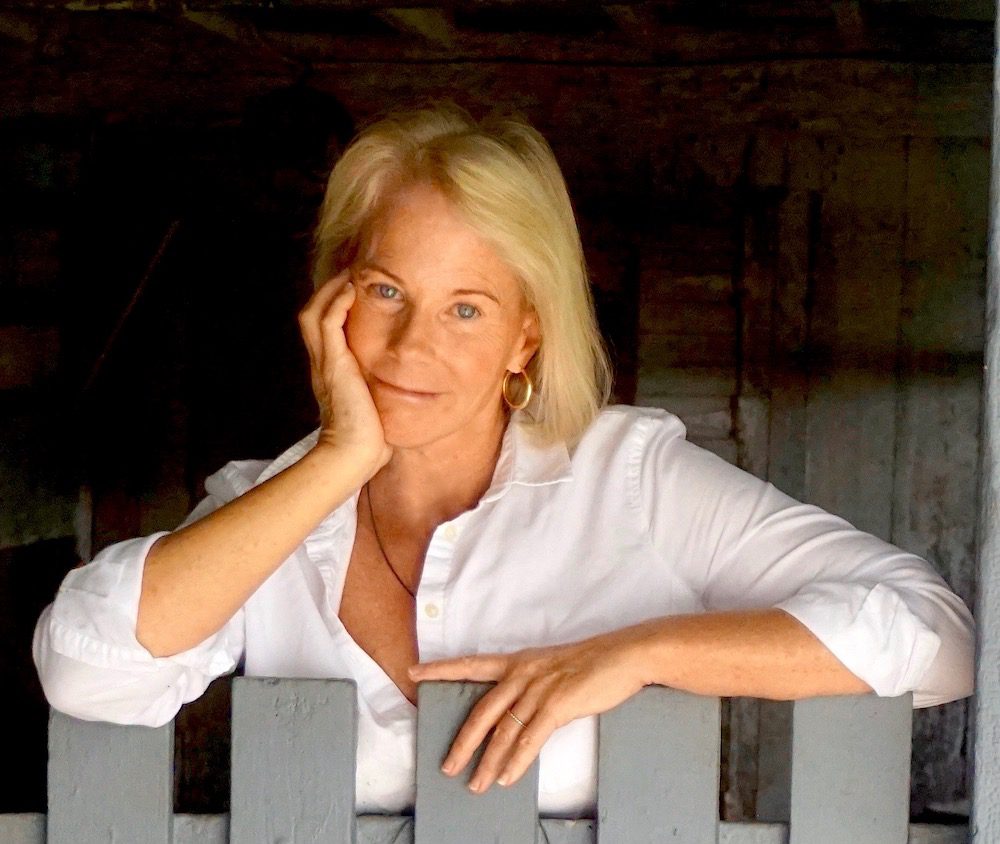
Ryder Ziebarth, a Garden History and Design Representative, Zone IV, Garden Club of Somerset Hills, for the Garden Club of America, is also a writer of creative non-fiction.
